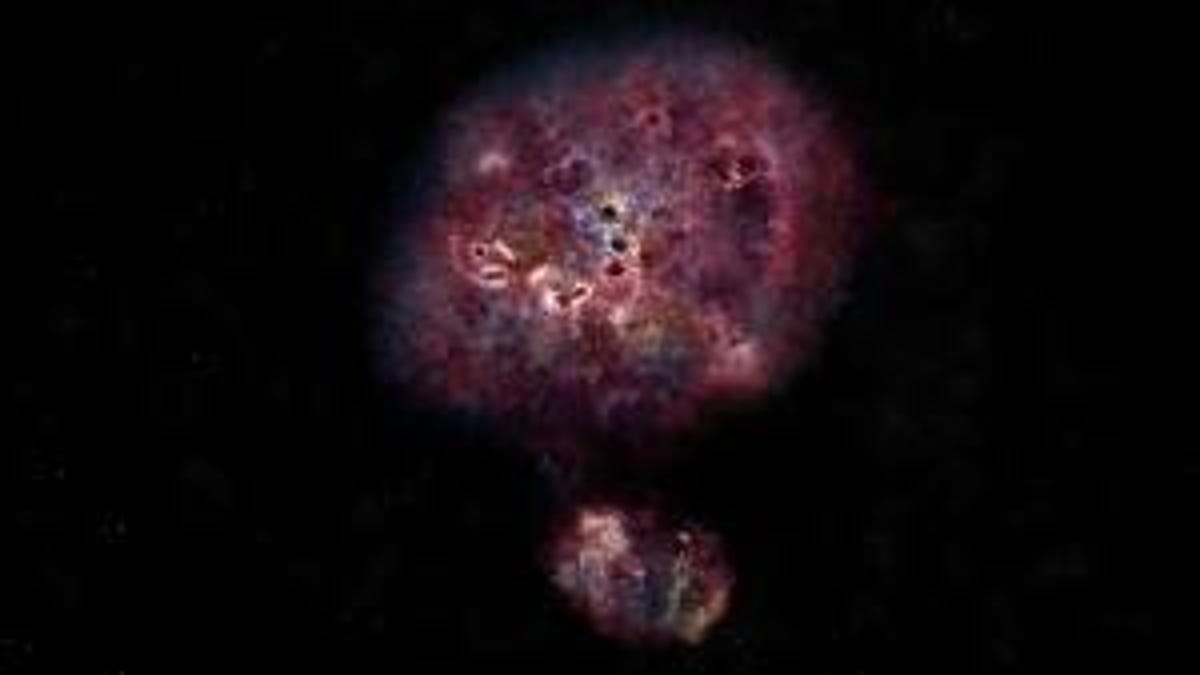Astronomers puzzle over ancient 'monster' galaxy
The massive galaxy XMM-2599 is more than 12 billion years old, researchers say.

An artist's impression of a massive, dusty galaxy, similar to what XMM-2599 looked like when it was forming its stars.
Of all of the universe's strange phenomena, the monster galaxy XMM-2599 stands out, researchers say. Its story begins 12 billion years ago -- when our own universe was a toddling 1.8 billion years old -- with a nebulous gas cloud that began spinning up stars at a frenetic pace.
Our own Milky Way galaxy forms just one star or so a year, but the monster galaxy went wild, forming a mass of more than 300 billion suns very quickly. And on went its celestial churning until, in seeming indifference to all human astrophysical modeling, the monster's star-making suddenly came to a screeching halt. And now the monster-hunting astronomers want to know why.
Describing their work in The Astrophysical Journal Letters, the international research team detailed why a galaxy the size of XMM-2599 should normally be expected to continue producing stars for billions more years.
"What makes XMM-2599 so interesting, unusual, and surprising is that it is no longer forming stars, perhaps because it stopped getting fuel or its black hole began to turn on," Gillian Wilson, the study leader and a professor of physics and astronomy at the University of California, Riverside said in a Wednesday release. The discovery could again force astrophysicists to "call for changes in how models turn off star formation in early galaxies," Wilson added.
Questions remain about the future of the monster galaxy, and the researchers have been awarded more time to continue their work at the W. M. Keck Observatory in Hawaii. Though they know it can't lose mass, it's unclear whether the largest universe of its epoch will continue to exist in isolation. It could, as one researcher said, "gravitationally attract nearby star-forming galaxies and become a bright city of galaxies."

